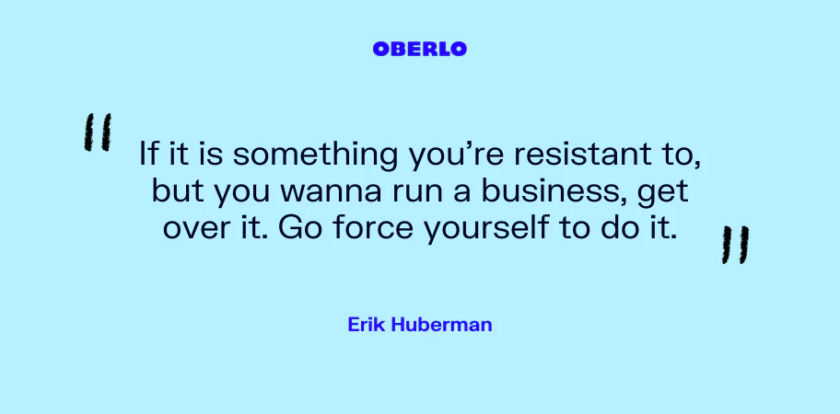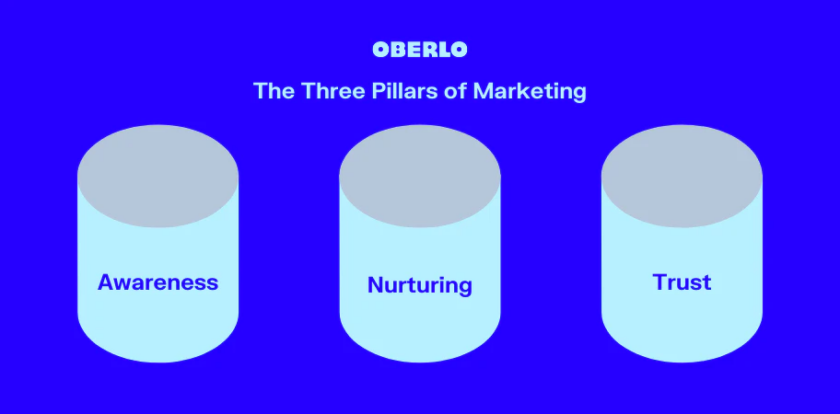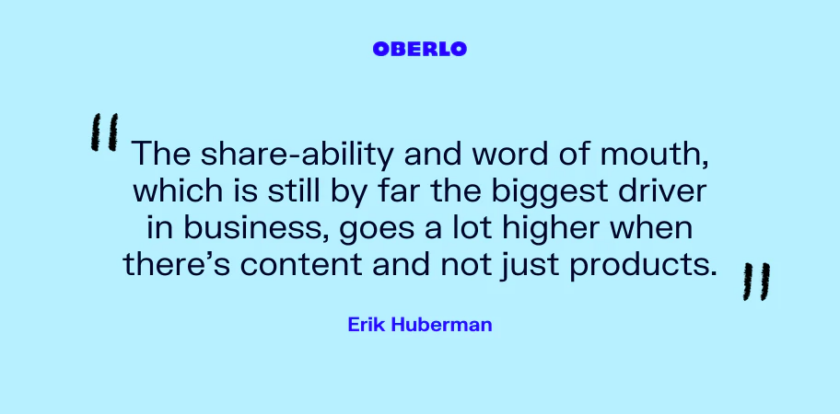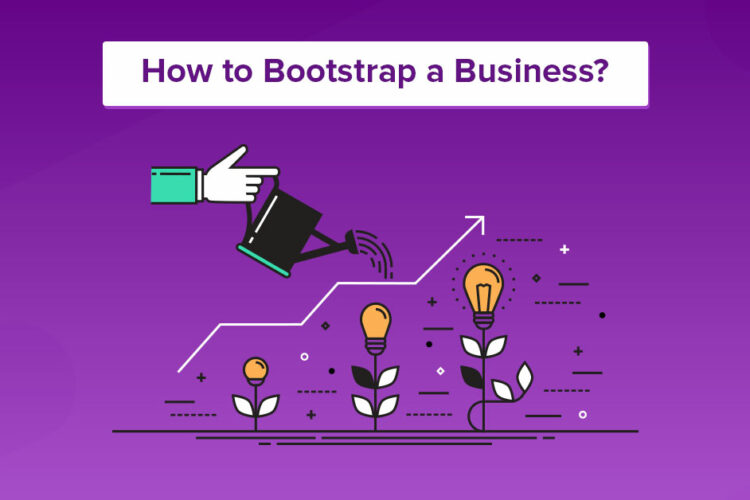
How can I begin marketing my company?
Is it preferable to use Facebook or Google?
What about the use of influencer marketing?
How much money will I need to spend? Know How to Bootstrap Your Marketing and Become an Established Brand.
Whether you already have an ecommerce business or are considering starting one, you will have asked these questions at some point.
In this episode of Start Yours, we dive deep into marketing, covering everything from the fundamentals to influencer marketing and trust building. And to help us do so, we’re joined by Erik Huberman, a premium marketer and the man behind Hawke Media, the fastest-growing marketing consultant in the US with a valuation of more than $75 million.
He has some well-known clients, as well as start-ups and everything in between, including ecommerce enterprises.
Do you want to expand your business? Then stay tuned for Erik’s marketing advice and insights right now.
If you love the podcast, please consider subscribing. Also, remember to visit our blog for more ecommerce and entrepreneurial content.
Do you need to get somewhere quickly and prefer a fast summary? Here’s a seven-point summary:
- Prepare yourself and become accustomed to rejection. It quickly becomes a numbers game.
- Marketing is built on three pillars: awareness, nurture, and trust.
- Word-of-mouth is still by far the most powerful business driver. When there is substance rather than just products, shareability increases significantly.
- It will be unhappy if you are not doing it because you innately enjoy what you are doing.
- The hard sell produces a weak customer since you are forcing someone to come to you rather than allowing them to come to you.
- Use Facebook for lifestyle and brand promotion, and Google to respond to an existing demand for which you have a solution.
- The challenge with influencer marketing is that it is tough to grow in a predictable manner.
Cold-Calling and Dealing With Rejections
Aleisha: Erik, I appreciate you joining me on Start Yours. Today’s topic is all about marketing. That is the flip side of the coin, and I believe that people frequently underestimate how difficult it is to get your business off the ground and running.
Erik: I agree.
Aleisha: What I like about your tale is that you had to work hard to get your current business off the ground. You began with very little. Tell me about how you rose from nothing to become a marketing powerhouse.
Erik: I agree. This business is distinct from the consumer side of things because it can be founded entirely on network and relationships. That is, I had created and sold to ecommerce companies. In that way, I had developed a reputation as well as a network, knowing that I knew what I was doing and how to grow these things.
So, when I began advising and consulting for other organizations, it was a no-brainer for many of these folks who already knew and trusted me to come and hire me. I made it simple for them to do so.
So that’s how we got started. It was, in fact… Don’t get me wrong: it took some digging. It took action. It took contacting all of these people. It required putting myself out there.
But after that, it was really simple since I already had a decent network, which allowed me to basically launch Hawke because I had the first few clients in my immediate network.
Aleisha: You network with very large corporations. But can we go back to when you were hustling and truly trying to approach companies? ‘ Because I believe that many people are hesitant to cold-call or put themselves out there. It’s quite difficult. I’ve done that, and I believe it can be awkward, and I like talking on the phone. Many people no longer enjoy talking on the phone.
Erik: I’d recommend get over your fear of cold calling. You have to just go for it. I discovered it when I was 19 years old and took a sales job selling kitchen knives door to door, which I did on purpose to get acclimated to it.
My first job after college was as a real estate agent cold-calling for listings. And, as with many other things, the more you do it, the less you care about the rejection and stress. And therefore, if you’re opposed to it yet want to manage a business, get over it. Go ahead and force yourself to do it. Whatever that number is, you should just go for it because once you get used to making cold calls, they become second nature and you’ll have to do it.
I still don’t cold call for clients at this point, but I do cold call for all kinds of other collaborations. I cold call for deals I want to close and other things I’m attempting to do. And, don’t get me wrong, you still get a little bit of adrenaline going because you’re like, “What am I going to say?” Trying to predict the dialogue.
But, like jumping off a high ledge, you learn to just go for it. You just let go and go, and it’s really not a huge issue once you’re in it. As if the anticipation is far worse than the reality.

Aleisha: I agree. I re-entered the world of online dating earlier this year and had some success, which was wonderful, but it was that initial time when I thought, “Oh my my, the rejection, I don’t want to be… “
Erik: Then you know it’s probably due to a physiologic reaction to rejection. I’ve never researched what it’s about, but it doesn’t really matter. Someone rejecting you, whether romantically or professionally, means nothing. Continue on. Both sides of the sea are teeming with fish.
Aleisha: Yes.
Erik: Take what you can from it. If you wish they hadn’t, figure out what you did that could have benefited the next one. As I frequently mention in relation to our sales process. Our qualifying lead close rate is about 20%, which means that four out of five times, my team will hear no. And despite the fact that we are a premium brand with all the backing and credibility, that the majority of our leads are inbound, coming to us for assistance, four out of five customers say no.
Again, you get over it and it turns into a numbers game; you expect that to happen and prepare for hearing “no” a lot. Again, you get used to it quite soon.
The Three Pillars of Marketing
Aleisha: I want to go over the fundamentals of marketing in more detail. I am aware that you run very significant campaigns, and as we have all stated, the world has changed this year. With the way we go about generating a sale, I’m certain that marketing has evolved. Many of the people who listen to us are first-time entrepreneurs and e-commerce users. It is not required to be e-commerce. It might be a physical location. Anything might happen.
“Nothing is occurring. Crickets, “because they haven’t given it much thought. Because it’s my favorite thing, if you were establishing a business today, I would recommend starting with potted plants. I simply adore plants. If you were starting a business with pot plants today…
Erik: One of the largest direct-to-consumer house plant businesses in the nation is one of our key venture investments.
Alisha: Excellent. Great. Well, the listeners of Start Yours will say, “Yes, Aleisha has finally found someone to talk about marijuana.”
Erik: I agree.
Aleisha: Can we go over a few stages that maybe you would take with a client and how we would go about marketing the pot plant firm if we were to launch an e-commerce brand selling pot plants?
Erik: I agree. The good news is that this only makes up a small portion of our business; we also market for smaller brands. Our company’s mission is “Accessibility to Great Marketing,” and while we are the best at what we do, we will work with just about anyone who needs assistance.
The Three Pillars of Marketing cont’d
We’re going to produce a book about this, but whenever we examine a marketing campaign, we sort of cover three categories, or three pillars of marketing.
The concept is awareness, “How can you get people to notice your good or service? How can you go about doing that?” It might be commercial. It might be the press. It might have an impact on marketing; there are many strategies to promote your business. In a moment, I’ll go into greater depth.
The most crucial aspect of marketing is nurturing, which most people overlook. When someone views an advertisement or learns about your business, it’s likely that they won’t make a purchase immediately away.
There is a time between when consumers are first introduced to your product or service and the actual purchase, which is referred to as a deliberation period or purchase cycle. Being the third pillar, if you don’t take any action to aid them along the way and establish some trust with them, you’ll typically see a much, much, much lower conversion rate, a lot smaller return on your advertising, and sort of awareness-building.

With awareness, there are many tools at your disposal. Both Facebook and Google ads are options. Partnerships are excellent if you lack the necessary funds. Find partners who have the same audience as you and collaborate with them to reach theirs.
Even though it’s a little out of date at this time, press can still be useful. Today, we use press far more for trust-building than for brand awareness, thus telling your current leads that you were featured on this site does much more than just hoping for leads.
And once they’re in your funnel, nurturing is extremely effective when you capture their phone number, email address, and other contact information. You can also use chatbots, SMS, email marketing, and other methods to stay in touch with them.
Since you’re producing sponsored material… Potted plants are a good illustration in this case. The Cell is therefore our investment. The Cell, a company, is on Shopify and offers a hotline for customers. If your plant is having problems, you can phone their hotline and discuss the issue with them.
The Three Pillars of Marketing cont’d
Aleisha: It’s fantastic.
Erik: The best. Every day, they post articles on how to care for various plants, what to do, and various tips and methods. By doing this, potential customers who haven’t yet made a purchase from them might start reading that content and think, “Wow, they know all this stuff.” They will now be a customer.
Additionally, people are much less likely to share a link to a product page for a particular finicky fig than they are to say, “Hey, here’s a very amazing article about how to take care of your plants,” “The top 10 plants to have in your house,” or something similar.
Therefore, when there is content rather than just things, the shareability and word of mouth, which is still by far the biggest driver in business, go up significantly. You also receive more nurturing. In general, you receive a lot more engagement. Additionally, it raises exposure thanks to its SEO worth and word-of-mouth potential, which may help people find your material. Therefore, substance is crucial.
But once more, the most important issue is determining whether you are taking steps to raise awareness among those who are likely to purchase your product or service, essentially bringing new individuals into the funnel.
The Three Pillars of Marketing cont’d
What are you doing with that awareness after that? And how are you fostering that to boost lifetime value and conversion rate at the same time? It refers to following up with customers after their initial purchase, luring them back, and other similar activities because doing so is far less expensive and more successful. The funnel still needs to be filled. You must complete the awareness component for this reason, but it is also beneficial.
Press, influencers, endorsements, recommendations, word of mouth, content that fosters their faith in you—all of these things—are examples. And over time, reliability establishes that trust, or “brand,” as some might put it. Your level of trust develops as whatever your brand stands for becomes more and more well-known and prominent.
When I go buy a Coca-Cola, I don’t need to ask someone else to explain what I’m buying. Whether it is healthy or not, I am confident in what I am receiving. A Coca-Cola, that is. The trust component can be replaced if you can develop the same thing for your brand, which is something that most individuals can do if they just maintain consistency.

Frequently Asked Questions
1. How is marketing bootstrapped?
Any small business may implement these 5 bootstrap marketing ideas right away.
- Find out how to run the show.
- Concentrate On Your Target Customers.
- Develop Your Online Presence… Take Part in Community Outreach…
- Make straightforward videos to showcase your brand.
2. What bootstrapping’s guiding concepts are there?
Inference about a population from sample data (sample population) can be represented by resampling the sample data and doing inference about a sample from resampled data (resampled sample), according to the core notion of bootstrapping.
3. Which are a few examples of bootstrapping?
Bootstrapping can take many different forms, such as using credit cards, personal loans, bartering, or factoring, which is the sale of accounts receivable to quickly acquire capital.



